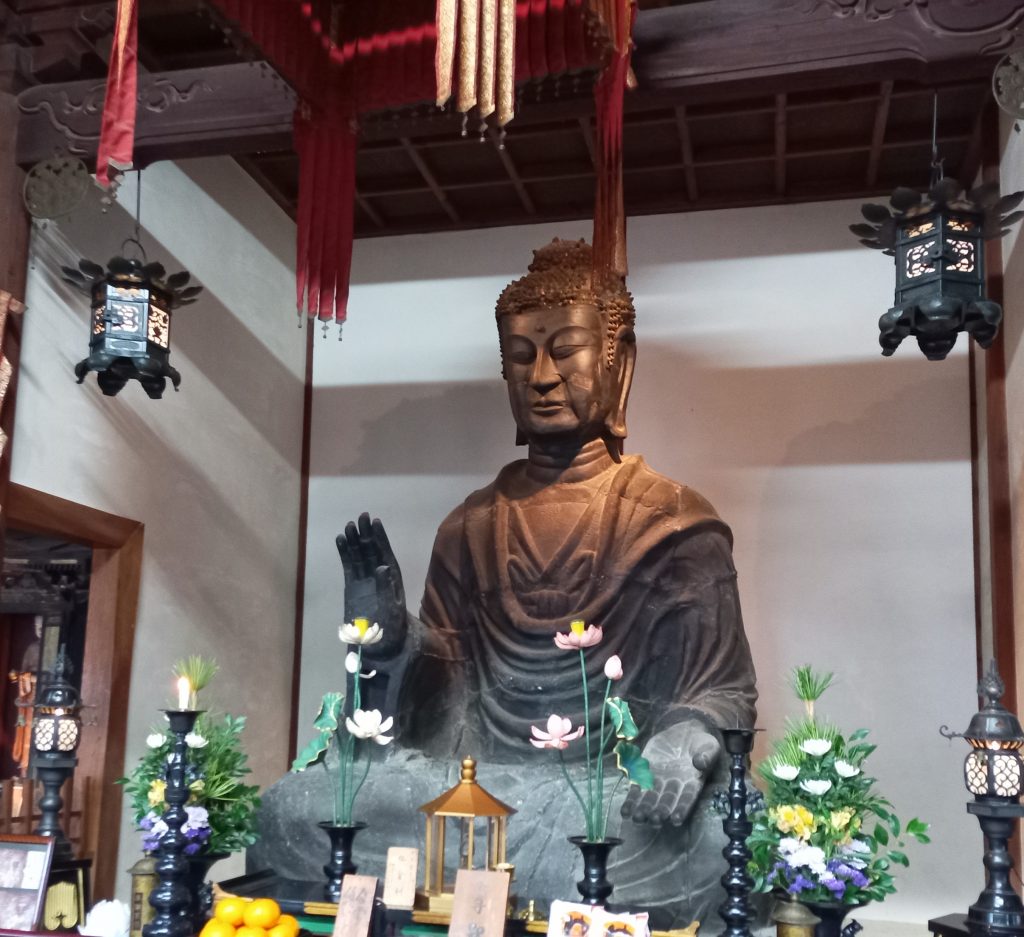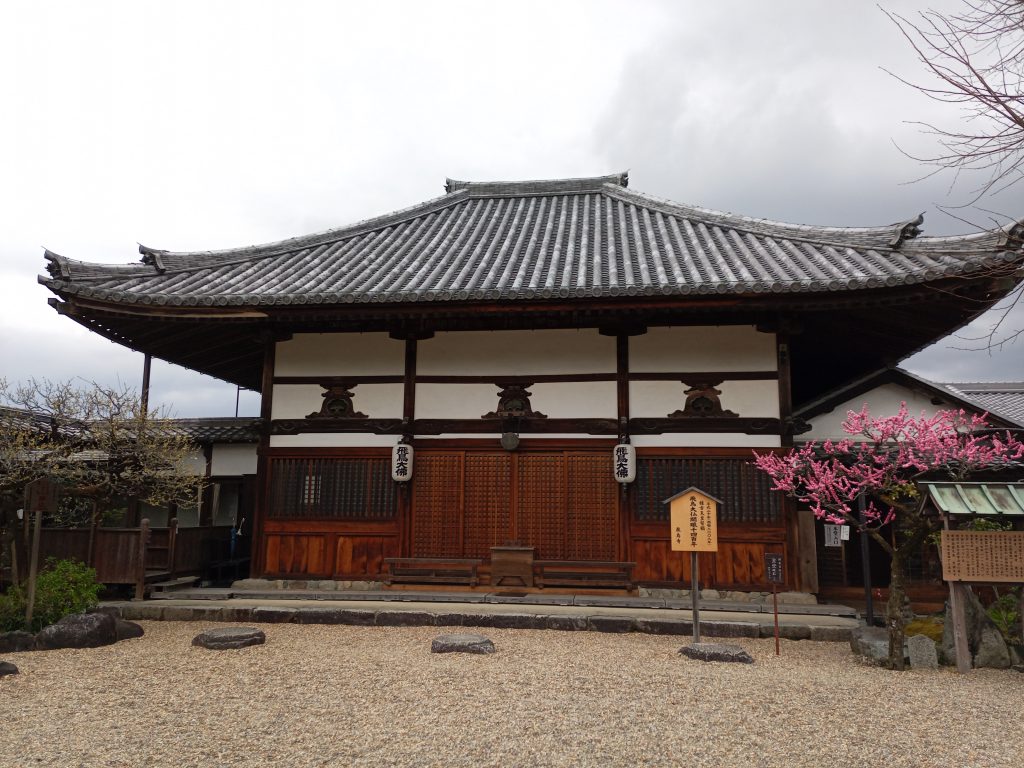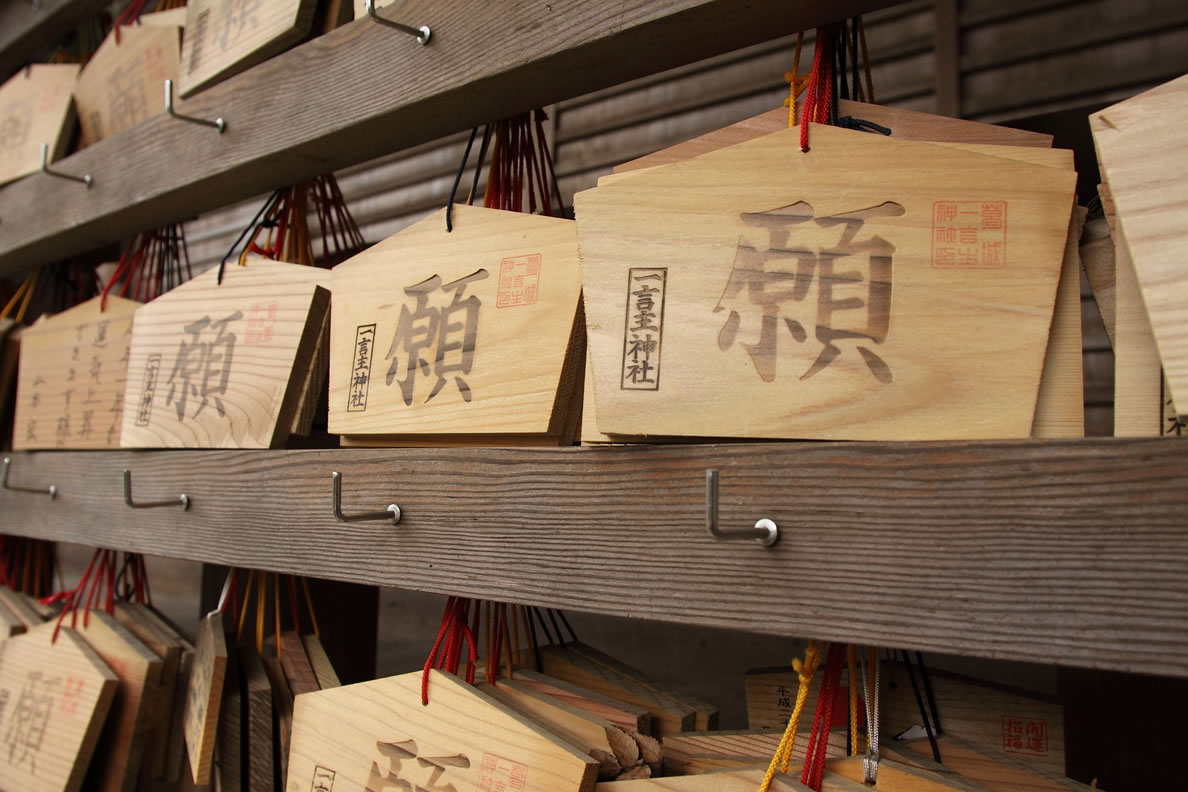The Oldest Known Buddhist Temple in Japan is in Nara Prefecture
2023/03/28
The oldest known Temple in Japan is Nara Prefecture’s own Asuka-dera Temple, a now surprisingly simple and unassuming temple complex located in the beautiful countryside of Asuka Village. This temple is believed to have been established in the year 588 CE by Soga no Umako, an influential figure of the powerful Soga clan who supported Buddhism’s introduction and establishment in Japan.
Asuka-dera is also home to Japan’s oldest known Great Buddha (“Daibutsu”) statue, which is still believed to contain original material from the time of its construction in the year in the year 606 CE.
Luckily, access to this incredibly important historical sight is now made easy for all through a well established (and easy to use) bicycle rental service based in front of the Asuka Train Station. Rent a bike from here for a day, and you can easily access Asuka-dera via a 15-20 minute bike ride through some of the most beautiful traditional scenery in Japan.
So what events lead to its founding? Please read on for more info!

Many important historic sites can be found in the scenic landscape of Asuka Village.
During what is now known as the Kofun period (300-538 CE), the kingdom that would later become Japan was still a relatively minor power compared to its neighbor’s in the Korean Peninsula and mainland China. Seeking legitimacy, Japan sent emissaries abroad to speak on its behalf and import ideas & invite experts in on a variety of topics, from religion to architecture. It was during this time of cultural exchange that Buddhism was introduced into Japan, with a major event being in the year 538 CE, when the Korean Kingdom of Baekje gifted a Buddhist statue to the country of Japan.
As legends say, the introduction of a statue of a Buddha brought out a major rift in the Japanese aristocracy between the Soga clan, who supported the introduction of Buddhism, and the Mononobe, who sought to keep Buddhist influence out and preserve native kami worship. The Japanese Emperor initially sided with the Soga, allowing the statue of a Buddha to be kept by enshrined at a temple by the Soga clan. However, a plague hit Japan soon after, which was interpreted as a sign that the native gods were angry. As a result, the Emperor ordered that the statue be cast into the river to remedy the situation, though it would turn out only delay the inevitable, as the Soga and Mononobe clans would continue to feud over the religious direction of the country.
In the year 587, the conflict over religion in the aristocracy came to a head with a war between the Mononobe and the Soga that would eventually see a total victory for the Soga, and the formal acceptance and adoption of Buddhism into the government of Japan. Leaders such as Prince Shotoku and Soga no Umako would support a major cultural change in the the Nara area, founding numerous new Buddhist temples and using foreign experts to guide construction methods and the teaching of religious precepts.
As stated above, Asuka Temple was constructed in 588 CE, right after the conclusion of this conflict, making it likely the first formal Buddhist temple constructed in the country. It is said that experts from the Korean Peninsula came to instruct on the proper way to construct the temple complex, and even today, the architectural style still resembles that of traditional Korean Buddhist temples.
Asuka-dera’s main object of worship is a 2.7 meter tall, bronze statue of Miroku Buddha built in the year 609 by a master sculpture, making it likely the oldest known Buddhist statue in the country; although it is worth noting that the entire statue does not date back to 7th century, but rather a few small sections which were preserved after it was rebuilt. Viewing the statue means paying a small fee to enter the main hall, and all visitors are allowed to take photos of the priceless work of art as they wish.

The Great Buddha of Asuka Temple.
The Great Buddha of Asuka has a number of interesting features that set it apart from other statues, including a surreal, almost alien-like proportions and and just a face with just a hint of a smile. It said that these are the result of the fact that the original sculpture who designed it didn’t know exactly what an image of Miroku Buddha was supposed to look like. It is also easy for visitors to stand right up in front of the statue, allowing for a great deal of detail to be observed in its design. This easy closeness to the Buddha also speaks of the era it was built—before Buddhism in Japan became much more esoteric and access to where the Buddha (aka the principle object of worship) residing in a temple became much more exclusive and farther back from where visitors could walk.

Main Hall of Asuka Temple, wherein lies the Great Buddha.
Asuka Temple also has some somewhat unusual history beyond its incredibly old age in that it was split apart, literally, not long after it was founded. In a power play meant to to throw off the influence of nearby noble families, the capital of the country was moved from Fujiwara-kyo (near modern-day Asuka), to Heijo-kyo, in Nara City. When this upheaval occurred, part of Asuka temple was relocated to Nara City to make a separate temple, Gango-ji. Nowadays, Gango-ji and Asuka-dera both have legitimate claims to being the oldest temple in the country because they both share the same roots, however only Asuka is still located in the original location of the first temple’s founding.
Access:
Asuka Temple makes for a great place to visit as part of a day exploring the larger area of Asuka Village. Although there is no train station with direct access, the village of Asuka has great bicycle tourism infrastructure and you can easily rent one for a day from right in front of Asuka Station for a reasonable price. There is also a visitor center in front of the station where you can get helpful guidance and informational materials for how to best reach to Asuka Temple, as well as a bunch of other interesting places in the area.
Four guided tours of the area, please contact us right here at at Kansai Nara Treasure Travel.

Gose and Gojo were very prosperous cities before the city of Nara appeared in Japan’s mythology. The buildings and landscapes have been well preserved in these cities, giving one the feeling of being in a long-past era of Japanese history. On your second day, you’ll get to visit Yoshino, which…
from170,000JPY

01
FIND YOUR FAVORITE
TRIP ON OUR WEBSITE.
SEND US AN INQUIRY.

02
PERSONALIZE THE TRIP
TO YOUR INTERESTS
WITH OUR CONSULTANT.

03
20% DEPOSIT TO CONFIRM.
BALANCE PRIOR TO ARRIVAL.
PAYMENT BY CC OR TT.

04
WE WILL
MEET YOU
AT THE AIRPORT.

05
DISCOVER THE
TREASURES!